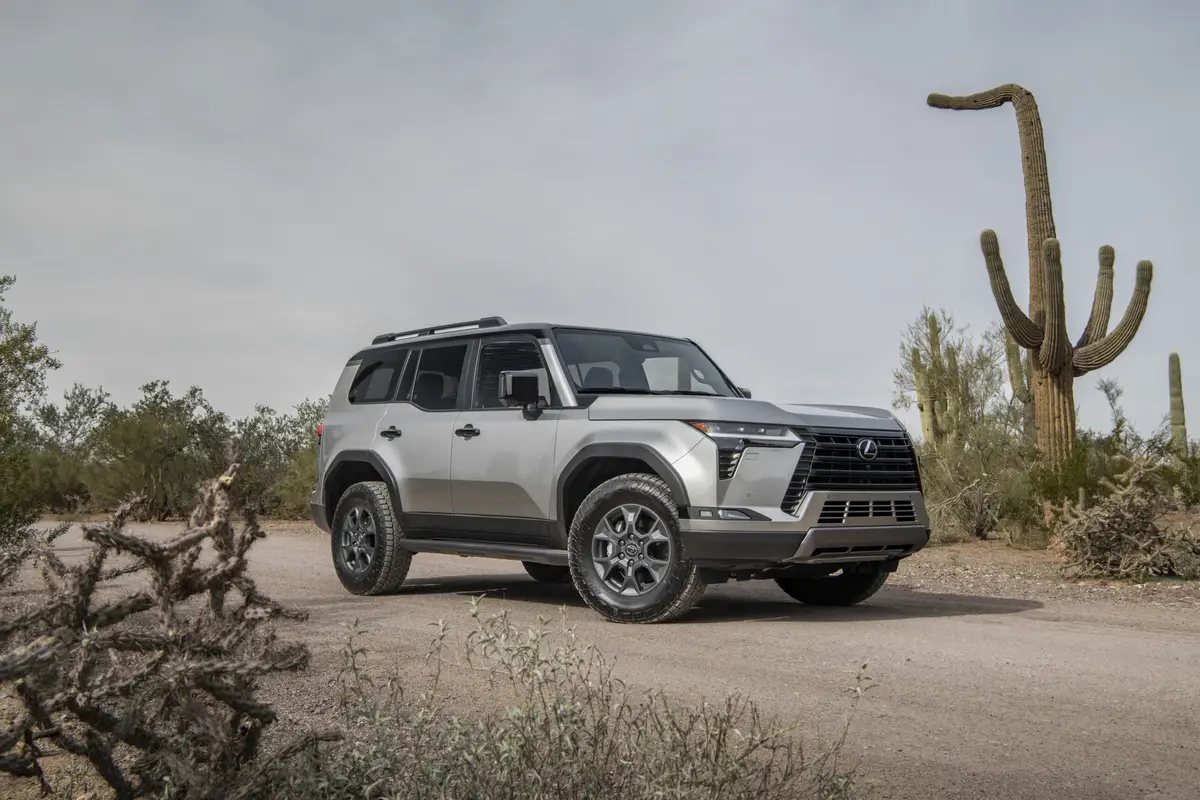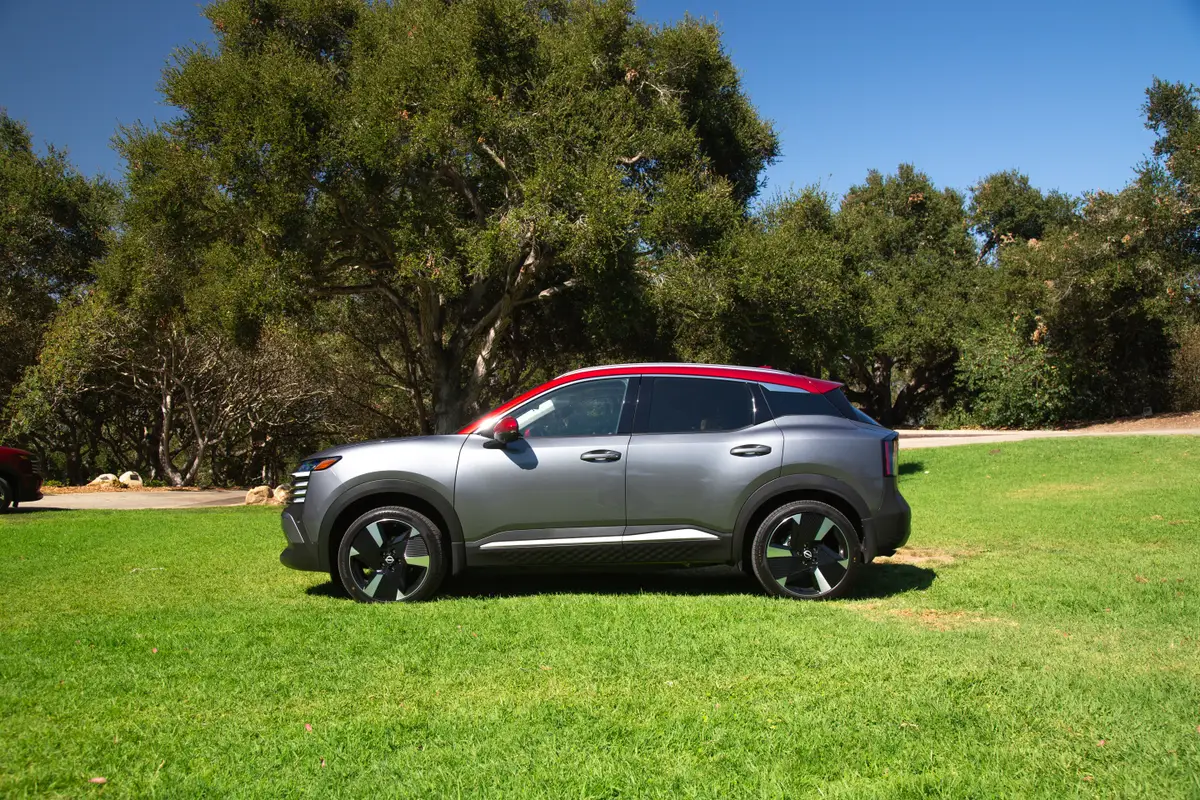Cincinnati.com's view
At last – a third row I don’t have to sneer or curse at.
I could actually envision sitting for a while as a steerage passenger in the all-new Ford Expedition; for openers, I could get back there without risking a week in physical therapy.
Some of the mid-size SUVs claim 8-passenger seating, but it would help if the lowliest 2 or 3 passengers were infants – and then there’s the question of Mom being able to get back there to secure them (you don’t think Dad would ever get such a dirty job, do you?).
It helped that the Expedition I tested was blessed with second-row captain’s chairs, which allow a walk-through passage to third class. But even if you need all nine seating positions, you’ll appreciate the fold-down, 40-20-40 configuration of the second row, plus, the middle section can be slid forward 11 inches to allow the flight deck easy access to one of the prisoners.
If you’re willing to spend a little options money, you can even have power-folding third-row seats. This struck me as a bit much, but, for $455, makes a talking point as sure to inspire schoolyard envy as power sliding doors on a van.
So I’m ready to stipulate this is a commodious people hauler, but it’s not a minivan, it’s called a full-size SUV. How does it do in that role?
First, I must note that Expedition is available as a two-wheel-drive machine. Are you SURE you wouldn’t rather have a minivan? Less weight, far better gas mileage, cheaper to buy . . . but of course freighted with that “suburbanite” stigma. The discussion here will be of the “real” Expedition, the 4×4.
Truth is, it’s probably a lot more capable than it needs to be. Given its size – nearly 206 inches long and pushing three tons – it’s not likely to blaze many trails, unless it’s sent ahead as a tree-leveler. More likely it’ll be used as a mommy-mobile and weekend boat-dragger. When rough weather comes, Expedition folks will be able to laugh it off.
The one Ford sent down as a tester was as luxe as they come, an Eddie Bauer edition with a few goodies on top of that. There are two engine choices, both V-8s: an all-aluminum 4.6-liter and the aluminum-over-cast iron 5.4-liter. Either one has a single overhead cam and but two valves per cylinder, since they’re tuned for low-end torque rather than top-end horsepower.
The smaller engine delivers 232 hp and 291 foot-pounds of torque. The bigger one puts out 260 horses and 350 foot-pounds. I imagine the 4.6 would be fine for those who seldom carry full loads and don’t tow. The test machine had the 5.4, and, carrying only me – a small load in this context – felt reasonably swift.
With the larger engine, the Expedition is rated to tow up to 8,650 pounds as a 4×4. That’s a pretty decent boat.
The 5.4 would be my choice, even though it carries a slight mileage penalty. EPA numbers for the smaller engine are 14 mpg city, 18 highway. The 5.4 matches the city number and is rated at 17 mpg on the highway. Bot h are designed to run fine on regular unleaded.
Good thing – in my real-world exercises, the big hoss gulped it down at the rate of a gallon every 12.4 miles in an equal mix of freeway and country driving, some of it admittedly a little intense. The engine was a little green, perhaps, but with a curb weight of 5,686 pounds and typically poor aerodynamics (0.41 coefficient of drag), this serious piece of work isn’t out to help the corporate average fuel economy.
The interior was quite handsomely done. Eddie Bauer packages upgrade almost everything in sight to a near-luxury level. The leather seats even had a pleasant aroma. Ride quality, with just the ballast behind the wheel, was exceptionally fine for a truck, and would be quite acceptable in a sedan. Taking some undulant surfaces quite fast, I could feel just a trace of high-frequency jiggle, which would almost certainly disappear with more weight on board.
On freeway-type surfaces, the ride was excellent, with fine road-shock exclusion. More surprising was how quiet the Expedition was, even at 70 mph. The cabin is effectively isolated from all the mechanicals, and moreover, even keeps wind noise at bay. For this new-edition Expedition, Ford claims a 70 percent improvement in torsional rigidity, or frame twist. Bottom line is the bruiser felt rock-solid, even when pounding rocks.
There’s the equivalent of a huge car trunk behind the third row: 20 cubic feet. By dispensing with all the second- and third-row seats, you can make a 110-cubic-foot cavern. There are many permutations along the way, of course.
Handling was excellent. The steering felt a bit light and a bit fast for this type of vehicle, but on-center feel was good.
It’s hard to know how much credit to give to the chassis engineers and how much to silicon. The test ship was equipped with the optional AdvanceTrak stability-enhancing system. Like others of its kind, it is programmed to anticipate when one or more wheels are about to lose traction, either because of slick surface or an over-exuberant driver. It does this by stabbing the brake on the wheel that’s losing it.
I tested it in a wide-open area on a night when, happily, there was some sleet falling. The system worked its magic forcefully but unobtrusively, overruling the inappropriate requests my right foot was making. In severe collision-avoidance maneuvers, the Expedition leaned a bit but never lost its cool. The drivetrain is manipulated by a switch on the dash – unfortunately hidden by the steering wheel. For economy, on good roads, one can select 2WD, which totally disengages the front drive mechanism. Ford says this is worth about half a mile per gallon – I’d be more interested in the reduced wear and tear.
The second option is all-wheel drive, which can be used at any time. There’s also a 4-wheel High position, which locks front and rear axles together for seriously rough slogging, and a 4-wheel Low, useful for either shouldering a heavy load or creeping down a low-traction surface.
I found a stretch down at the old gravel pit that looked pretty treacherous – sodden clay. Pulling onto it in 2WD, I was soon immobilized. A flip of the switch to AWD sufficed to extricate the three-ton load quite amusingly, as power flowed from front to rear and side to side under the guidance of the Unseen Hand. I’m not quite nuts enough to seek out a bog for testing 4 High or Low.
Brakes are an issue with this much mass, and the ones fitted to the truck at hand are up to their duty. They’re discs front and rear, with standard antilock and also brake assist, the new technology that senses an unusually fast depression of the brake pedal and goes into full braking milliseconds faster than normally would be achieved. In simulated panic stops from 70, stopping distances were agreeably short, with no fuss.
The government has not yet releas ed crash-test results for the new Expedition, but Ford says it’s confident it will equal the predecessor’s performance: top marks (five stars) for driver and co-pilot protection in a 35-mph full frontal collision.
The Insurance Institute for Highway Safety has not tested an Expedition.
An issue with SUVs in general is their tendency to roll, because their center of gravity is high. Ford offers as an option a side-curtain air bag system which, unlike the ones up front, fires, then keeps the bags inflated for several seconds when its sensors tell it the vehicle is going into a roll.
Base price on the Eddie Bauer 4×4 is $41,195. AdvanceTrak is $795; power folding third-row seat, $455; climate-controlled seats, $625. Total, with freight, was $43,810. Four-wheel-drive Expeditions start at $33,965 for a much more austere value edition. Price-tracker Edmunds.com brings these words of joy: an Eddie Bauer 4×4 is typically going for about five grand off sticker, so be ready to bargain hard. Payments at the nominal price of the tester would be $1,01, assuming 20 percent down, 10 percent interest and 48 coupons.
Latest news



